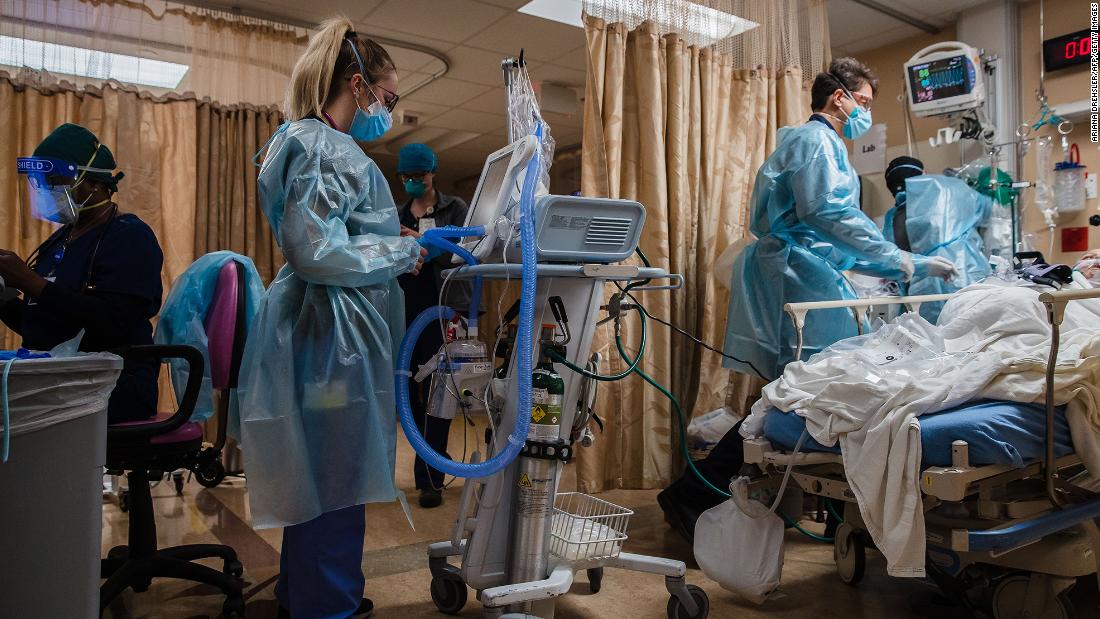
The risks of this pandemic unfortunately continue a long-term trend of failing to protect those who care for us. During outbreaks of drug-resistant tuberculosis, Ebola, and MERS, to name a few, we have applauded the dedication of nurses and other front-line health workers while sending them into battle inadequately protected. Tragically, those in frequent contact with the victims of epidemics often become victims themselves.
What's more, infected health care providers can infect vulnerable patients. Transmission in health care facilities undermines confidence in health care, because it exacerbates both the spread of infectious diseases and interrupts essential care.
We know how to keep our health workforce safe. We simply haven't done it effectively or consistently. Hospitals and health centers often lack the policies, facilities, equipment, and procedures in place to prevent the spread of infection, or often ignore them even if they are available. The result is avoidable infection and the incapacitation or death of medical staff we need to provide life-saving care -- especially now when our hospitals are reaching maximum capacity.
Our organization Resolve to Save Lives has studied how to improve safety for nurses and other health workers. Protecting our Front Line: How to Keep Health Care Workers Safe lays out the problems confronting frontline health care workers and makes recommendations for governments and health systems, and those funding them. There are four key tasks we must put into place now and fully implement in the next five years:
Infection prevention and control. Global standards for infection prevention and control include a hierarchy of controls that reduces sources of infection and improves engineering (such as with partitions), environmental (such as by increasing ventilation), and administrative (such as mandating that all in the facility wear masks) controls; calls for effective personal protective equipment (PPE); and provides patient triage and isolation. These interventions can be fully implemented over the next five years throughout health systems. Clean water, sanitation and hygiene (WASH) -- which is not consistently available in about a third of health facilities worldwide -- must be universal. Health care facilities, with the backing of management, should install and empower infection control leaders to take the lead on these protocols.
Health workforce training. It's not enough to create infection control policies. Health workers need continued education to stay up to date on best practices. Health care systems should be funded with the resources necessary for facilities to hire staff members who are dedicated to supervising and supporting health workers to implement protective policies.
Socioeconomic and legal support. Health care workers need support in various forms, be it financial, physical or spiritual. Many still lack sick leave and medical or mental health support, which must be a legislative priority. In the absence of these policies, health care workers burn out and leave their professions, worsening already critical shortages of medical personnel.
Monitor and continuously improve. What gets measured can get managed. Countries, states, and health facilities will be able to more effectively curb the spread of infections if they track handwashing, hospital-associated infections, availability of PPE and adequate water and sanitation in health care facilities -- and make this information available to the public. We also need better data and reporting on health care workers who fall ill and die. The World Health Organization should monitor outbreaks among health workers and other developments in health care safety and issue annual reports so we can continuously make hospitals and other facilities safer for medical workers and patients.
Donors and development partners also have an important role to play in increasing support for infection prevention and control, including PPE and clean water for facilities. All health funding programs should automatically include assessments of health worker and health care safety. Funding for infection prevention and control and WASH must be embedded in a wide range of investments, including both health-specific initiatives and broader development programs.
Nurses and other health care workers deserve to have their safety assured. When health workers are at risk, patients and the entire health system suffer. There is already a global shortage of health care professionals, and without focused action, this shortage will worsen. We have a collective responsibility to protect the vital resource of medical personnel by providing these workers with the standards, tools, support and training to provide the safe and life-saving care we all need.
"Opinion" - Google News
January 25, 2021 at 07:57AM
https://ift.tt/39ZxpF8
How we can keep health care workers safe - CNN
"Opinion" - Google News
https://ift.tt/2FkSo6m
Shoes Man Tutorial
Pos News Update
Meme Update
Korean Entertainment News
Japan News Update
No comments:
Post a Comment